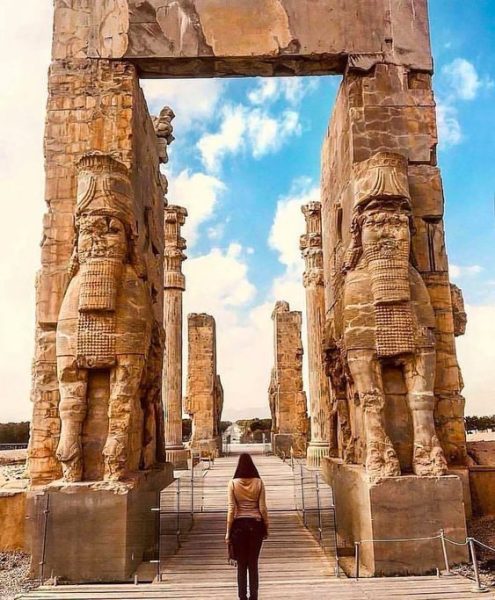
Nestled in the heart of ancient Persia, Persepolis stands as a testament to the grandeur and sophistication of the Achaemenid Empire. Among its most iconic features is the Gate of All Nations, a monumental entrance built during the reign of Xerxes I. Adorned with intricate carvings and guarded by imposing mythical figures, this gateway serves as a gateway to the rich history and cultural heritage of Iran. In this article, we embark on a journey to explore the significance of the Gate of All Nations and its role in shaping the narrative of Persepolis.
The Magnificence of Persepolis:
Persepolis, also known as Takht-e-Jamshid, served as the ceremonial capital of the Achaemenid Empire, a sprawling metropolis that epitomized the empire’s wealth and power. Constructed during the reign of Darius the Great in the 6th century BCE, Persepolis boasted opulent palaces, majestic halls, and intricate reliefs, showcasing the architectural prowess and artistic ingenuity of ancient Persia.
The Gate of All Nations: A Symbol of Authority and Grandeur

At the heart of Persepolis stands the Gate of All Nations, an imposing structure that served as the ceremonial entrance to the royal complex. Built during the reign of Xerxes I, the gateway is adorned with intricately carved reliefs depicting scenes of homage and tribute. The pillared entrance, reminiscent of Assyrian architecture, is flanked by colossal statues of bearded and hoofed mythical figures, symbolizing the empire’s authority and dominion over its subjects.
Architectural Marvel and Symbolic Significance
The Gate of All Nations exemplifies the architectural brilliance of ancient Persia, with its towering columns, elaborate carvings, and imposing presence. Beyond its aesthetic appeal, the gateway held profound symbolic significance in Achaemenid ideology. As the primary entrance to Persepolis, it served as a visual representation of the empire’s majesty and power, welcoming visitors from all corners of the realm to pay homage to the Persian kings.
Guardians of the Gateway: Mythical Figures and Symbolism
The guardians of the Gate of All Nations are among its most iconic features, evoking both awe and intrigue among visitors.

These colossal statues, known as Lamassu, depict mythical beings with the bodies of lions or bulls, wings of eagles, and human faces adorned with majestic beards. Symbolizing strength, wisdom, and divine protection, these figures served as gate-guards, warding off evil spirits and protecting the royal complex from harm.
Historical Insights and Archaeological Discoveries
The excavation of Persepolis and its surrounding areas has yielded a wealth of archaeological findings, providing valuable insights into the political, social, and cultural landscape of ancient Persia. The discovery of inscriptions, artifacts, and architectural remains at the site has shed light on the rituals, ceremonies, and administrative practices of the Achaemenid Empire, offering a glimpse into its majestic past.
Preservation and Conservation Efforts
Preserving the legacy of Persepolis and its architectural wonders remains a priority for Iranian authorities and international organizations. Conservation efforts aimed at safeguarding the site from environmental degradation, vandalism, and looting are ongoing, with initiatives focusing on documentation, restoration, and public awareness. By ensuring the preservation of Persepolis and its monuments, we can continue to honor the legacy of ancient Persia and inspire future generations to appreciate its rich cultural heritage.
Conclusion:
The Gate of All Nations stands as a symbol of Persepolis’s enduring legacy, a testament to the grandeur and sophistication of ancient Persia. As we marvel at its architectural splendor and decipher its symbolic significance, we are reminded of the profound impact of this magnificent structure on the narrative of Iranian history. Through preservation and appreciation, we can ensure that the Gate of All Nations continues to inspire awe and admiration for generations to come.





